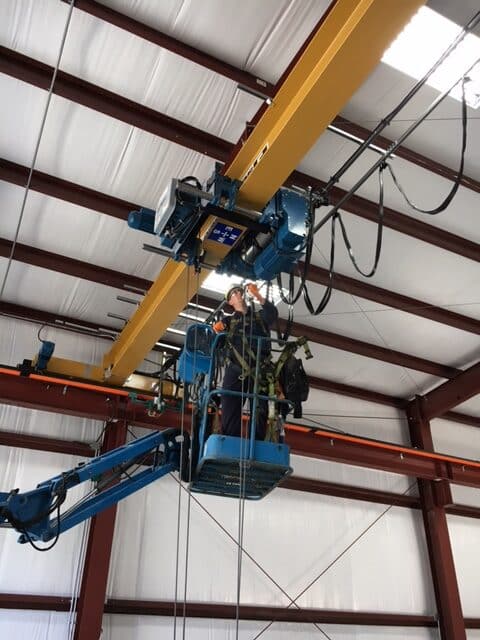Overhead cranes are essential for many industrial operations as they lift heavy loads, keep projects moving, and make difficult tasks more efficient. Due to their high level of responsibility, inspecting overhead cranes is required for safety, compliance, and performance. By following OSHA and ANSI standards and committing to preventative maintenance, companies can keep their equipment running at its best, reduce downtime, extend the life of their systems, and protect their people.
The Value of Inspections
Regular crane inspections are a proactive measure that directly impacts safety and productivity. Identifying problems early helps prevent unexpected downtime and protects employees while extending the life of the equipment. In the long run, inspections save companies money by reducing repairs, minimizing accidents, and ensuring uninterrupted operations.
Types of Crane Inspections
The frequency and depth of inspections depend on the type of crane, its service class, and how often it is used. There are two primary categories: Frequent Inspections and Periodic Inspections.
Frequent Inspections
These are performed daily to monthly and are done by operators or designated personnel before use. Inspectors should include visual checks for wear, cracks, leaks, or any abnormal sounds.
Common Checklist Items Include, But Are Not Limited To:
- Hook deformation or cracks
- Maladjusted or faulty operating mechanisms
- Deterioration in hydraulic or pneumatic systems
- Worn or stretched hoist chains and wire ropes
- Abnormal brake and hoist operation
Periodic Inspections
These are in-depth evaluations that occur at least once per year. Periodic inspections are more detailed and require full documentation.
Common Checklist Items Include, But Are Not Limited To:
- Structural components showing cracks, corrosion, or distortion
- Excessive wear on gears, bearings, or rollers
- Bolts, rivets, or fasteners that are loose or missing
- Brake system wear or misalignment
- Chain stretch or sprocket deterioration
- Electrical issues such as faulty limit switches or damaged control stations
OSHA also requires that cranes not in regular use undergo inspection before being returned to service. For example, idle equipment for over six months must have a full inspection before operation.
Our team at Engineered Systems supports you by:
- Performing inspections in compliance with OSHA and ASME standards
- Delivering thorough inspection reports with clear findings and next steps to take
- Offering repair services when issues have been identified
- Helping you reduce downtime and keep your cranes safe and reliable
Contact us today to schedule your next inspection and keep your cranes operating at their best.


